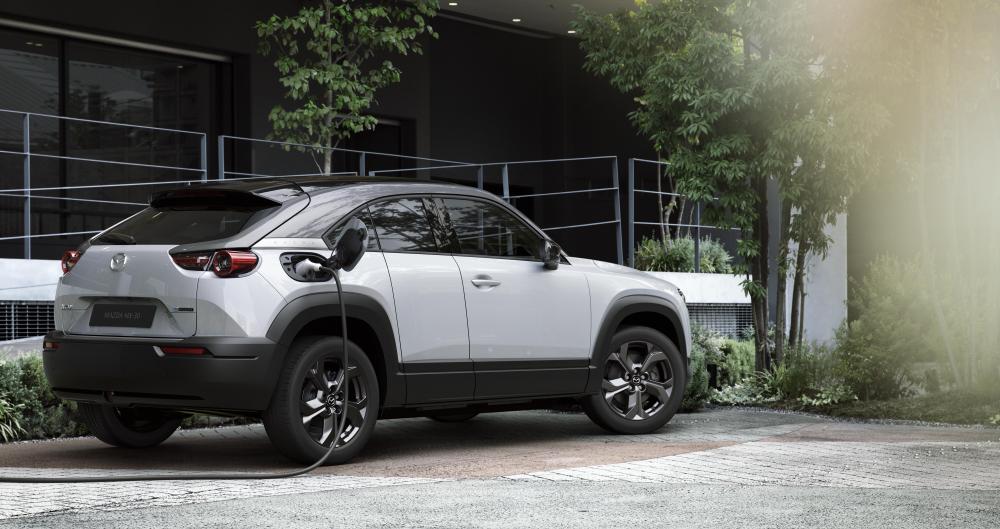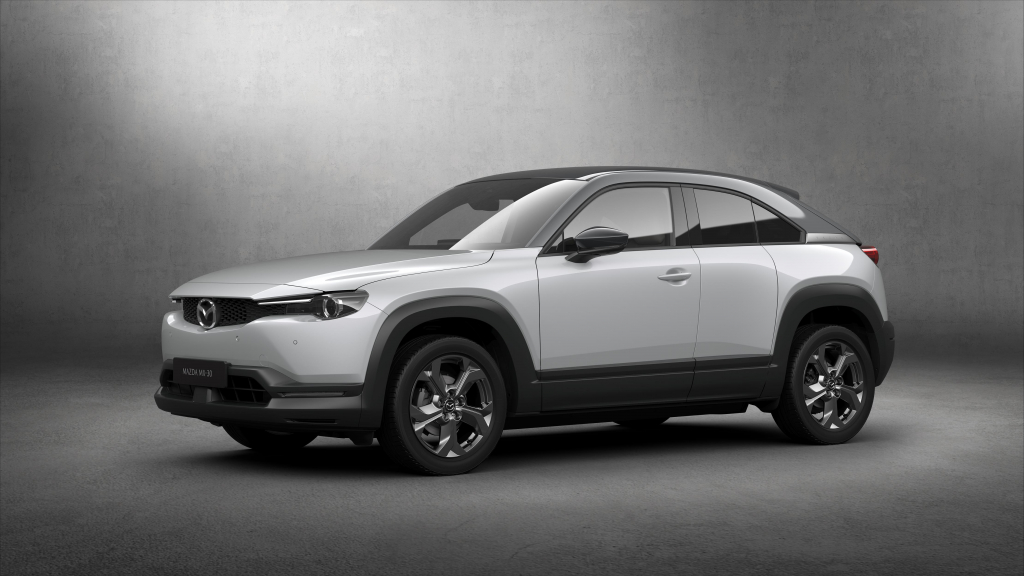Mazda has always been a brand that has been characterized by doing things “their way.” When all the manufacturers bet on downsizing and small turbocharged gasoline engines, the Japanese brand remained faithful to the atmospheric thrusters; When its rivals began to abandon diesel, the firm launched Skyactiv-X technology, which combines spark ignition from a gasoline engine with compression ignition from a diesel engine.
Being a relatively small company in a world of manufacturers of increasingly colossal size, Mazda’s strategy is to offer its customers a very different technical approach than the competition to continue maintaining its place in the market. This philosophy has also been applied, how it could be otherwise, in its first electric car: the MX-30.
The Mazda MX-30 is a model that leaves no one indifferent: derived from the CX-30, this compact SUV combines a body of peculiar design (it has two small rear doors with reverse-opening, like the sports RX-8), an interior made of alternative materials such as cork, and a powertrain that has not left anyone indifferent … either for better or for worse.
On the one hand, its 141 hp (26 kW) and 264 Nm of torque e-Skyactiv engine deliver power gradually and progressively, like an atmospheric propeller, thus disregarding the immediate response that usually characterizes electric cars. On the other hand, its 35.5 kWh capacity battery gives it an autonomy of 125 miles.

Even though from the beginning it was known that Mazda had planned to offer a version with an autonomy extender of the MX-30 (which would use the Skyactiv-R rotary engine, another of the minority technologies defended by the Japanese company for decades), what no one expected is that the brand would unveil a mild-hybrid version of its first electric car by surprise.
Last Friday, Mazda revealed to the world the new version of the MX-30, equipped with the 2.0 Skyactiv-G engine already seen in the CX-30, a micro-hybridized four-cylinder gasoline engine that makes the MX-30 the last member of each more extensive category of thermal SUVs with coupe bodywork. Thus, the Mazda MX-30 has ceased to be a 100% electric model, becoming a vehicle with thermal and electric versions. The brand will start taking orders for this variant at the end of the year.

